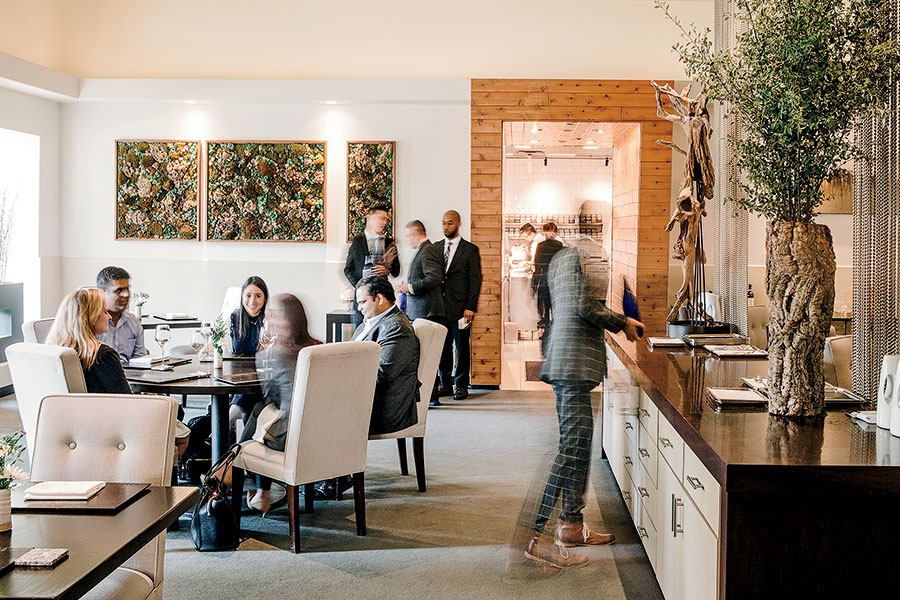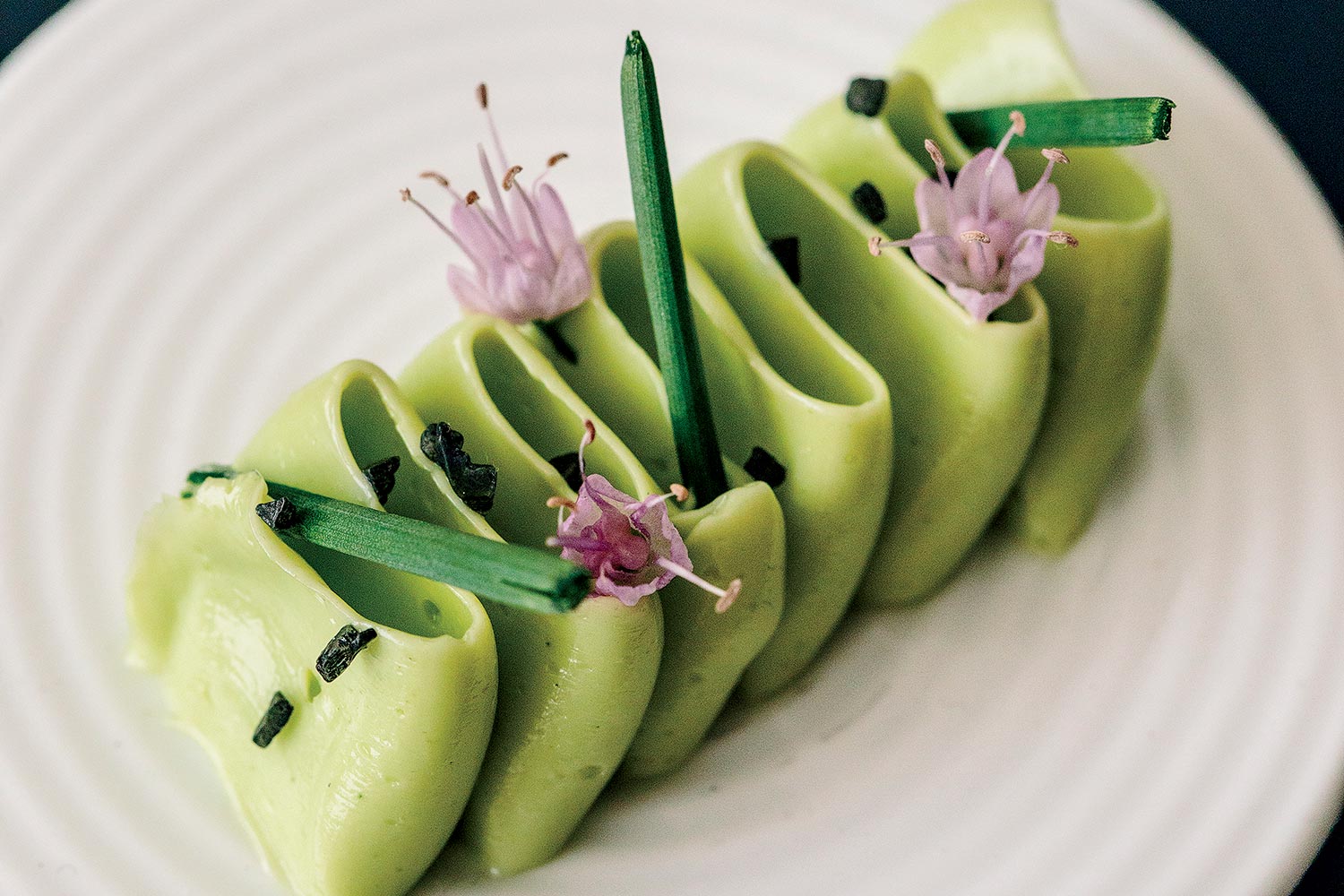I’ve been spotted as a dining critic before. Usually, it launches an unspoken game, the rules of which have been passed down through generations. No one says a thing. No comps, no bribes, no hovering. The restaurant sends its best server, someone gregarious but appropriate. We both try to do our jobs the best we can. During a 2016 meal at Grace, Curtis Duffy referred to me by the fake name under which I’d made my reservation, when we both knew damn well I was not Danny Lewison. That’s how you play the game.
But what happens when one side decides to thumb its nose at the game to such an absurd degree that it becomes all but impossible for the other side to do its job? That was the question I faced on a recent Sunday night at Acadia, Ryan McCaskey’s South Loop stalwart.
Acadia was a place I’d been eager to finally visit. After seven years, it has retained its two Michelin stars, and yet it struck me as underrated — perhaps due to its location far from the heart of the restaurant scene. It’s versatile enough to please the cheeseburger demographic (who congregate in the bar), formal enough for business dinners and couples enjoying an elegant night out.
What’s more, McCaskey seemed to be having a moment: He’d recently opened a second spot, Acadia House Provisions, in Stonington, Maine. And I’d heard that his cooking at Acadia had settled into an appealing groove. (For those unfamiliar with the chef’s story: McCaskey was born in Vietnam, abandoned as a baby, then evacuated from war-torn Saigon in 1975 and adopted by a couple in Chicago’s northwest suburbs.)
The meal started like so many others: with my presumably anonymous entry into a crowded restaurant that felt alive and full of promise. The dining room sizzled with conversation and bustled with staffers cooking slices of A5 Miyazaki wagyu beef tableside on steaming-hot slabs of black stone.
As dinner got underway, it became clear that Acadia’s 10-course, $185 tasting menu did not have the complexity of, say, Noah Sandoval’s cuisine at Oriole, but the prix fixe procession followed a striking arc. The opening nibble of white anchovy with ramp pesto and ricotta salata was a clean, crunchy burst that set the tone. It was the first of many dishes with a green-and-white palette meant to evoke McCaskey’s briny Maine summers as a kid. By the fifth course, butter-poached Penobscot Bay lobster with a tom kha bisque that folded McCaskey’s Southeast Asian heritage into the New England theme, I was checking out Maine Airbnbs on my phone.
The rare misfire notwithstanding — namely, the pho-glazed shima aji with goat-milk-cured foie gras, soy foam, and Carolina rice that tasted like hoisin sauce and not much else — the flavors were true and the presentations playful. McCaskey’s masterpiece, Alaskan halibut topped with a nutty brown butter and pistachio gremolata, packed the crunch of raw cauliflower and the punch of an angry welterweight. He’d balanced it with an earthy morel panna cotta made with cream, agar, and gelatin that gave the creation an almost foie-like consistency. I was entranced.

Then, an hour and a half in, something odd happened. Our endlessly attentive waiter, who’d flirted with my wife, me, and a plate of bone marrow over the past few courses, approached our table, eyebrows raised. “Want to stretch your legs a little?”
Curious, we followed him into the kitchen, past McCaskey teaching a younger chef to make headcheese while pretending to ignore us, and to a high table in back set with a white tablecloth, flowers, and Champagne. My jaw went slack. Up to this moment, Acadia had played the game so well that I hadn’t even seen it coming.
“WELCOME!” bellowed almost the entire staff in unison.
“Gee,” I murmured to my wife. “You think we’ve been spotted?”
The waiter brought over one of those scorching-hot slabs of stone, onto which he tonged six slices of the Miyazaki wagyu, a $65 menu add-on we had not opted for. Suddenly, I found myself forced to view the entire meal through a more suspicious lens. The smiling people around me felt like actors from The Truman Show, as if everything was there for my benefit. I began Googling images of dishes to make sure the photos looked identical to what was on my plate. (They did.)
Nearly everything served to us after that — the avocado sorbet topped with Yakult pearls that echoed the earlier scallop-roe dish, the strawberry mousse that pastry chef Kyleen Atonson had infused with duck egg yolk crema and wrapped in a rhubarb veil — was tremendous. And while I confirmed that these were nominally the same dishes served to other diners at Acadia, there was little I could do to compare their food with what I was eating, short of wandering around the dining room and asking for bites.
It’s tempting to give Acadia a pass — Ryan McCaskey did whatever he could to make a good impression in a ferociously competitive business — but the gambit was so audacious, it felt less like a wink than a bribe. I’ll be honest: It did feel good to have my ego massaged, but when the buzz wore off, I felt dirty and complicit.
To the extent that I was able to objectively take the pulse of the place, Acadia had no reason to muddy the waters. It did not suddenly become excellent for my benefit that Sunday night. Given the caliber of the restaurant, where the service and food have been honed by years of experience, I came away believing McCaskey and his team could have skipped the VIP routine and I’d still have felt pampered. Even without breaking the rules of the game, they would have won.



